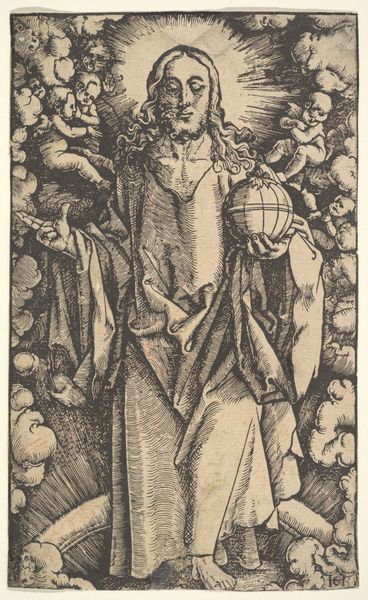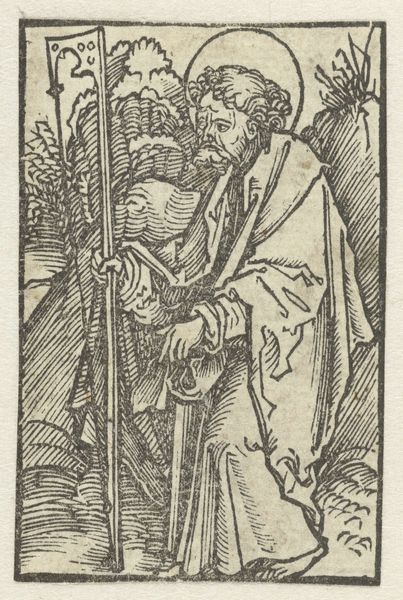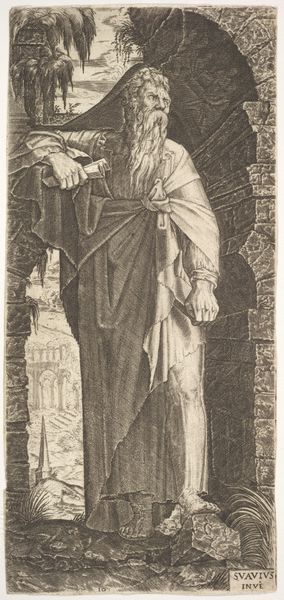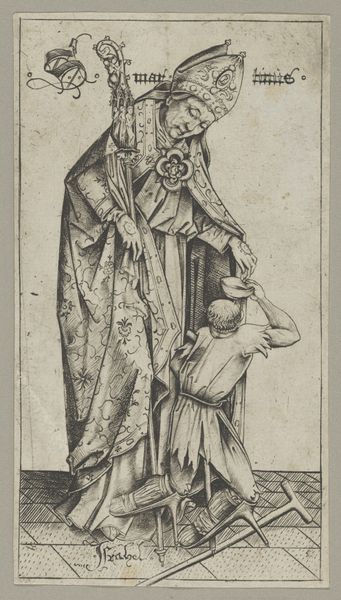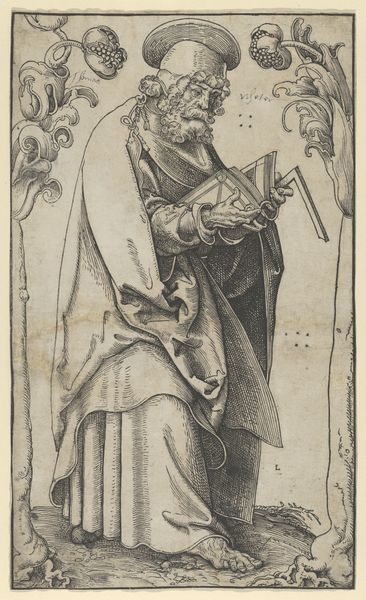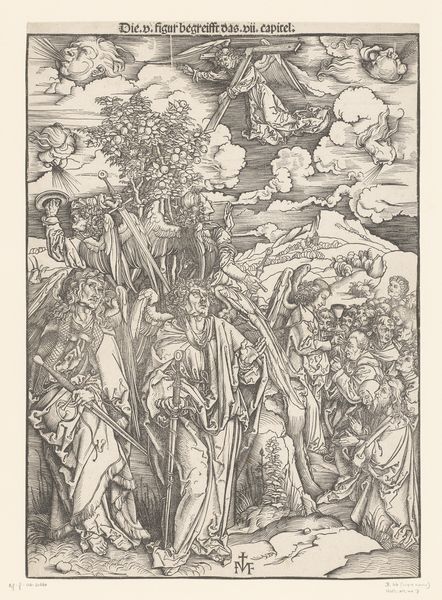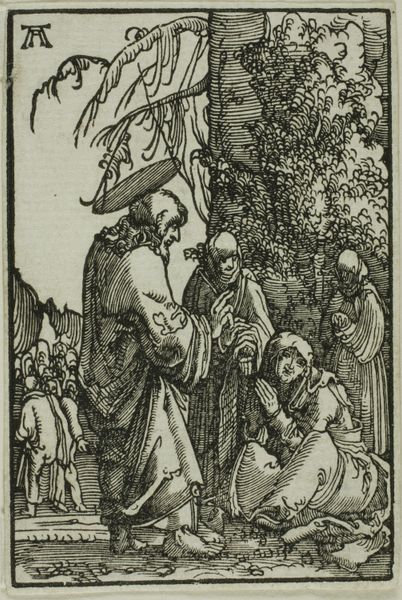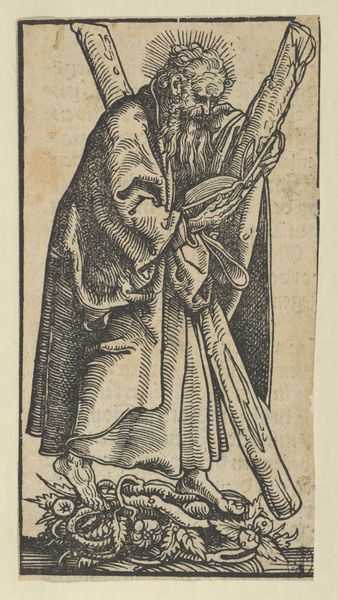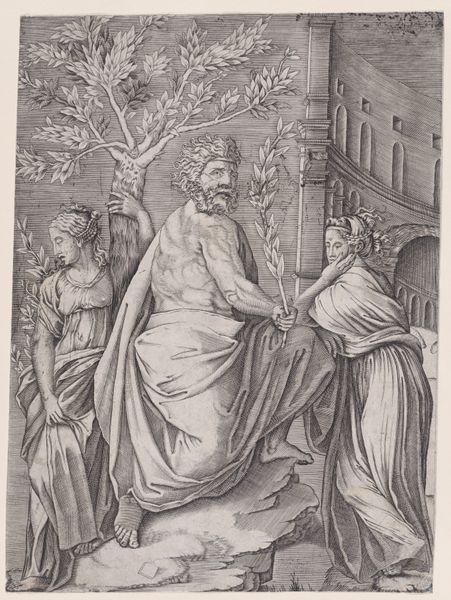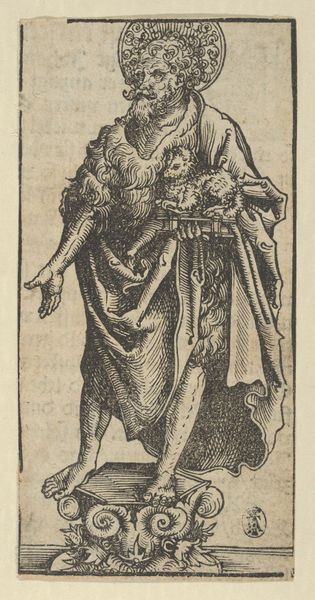
drawing, print, woodcut
#
portrait
#
drawing
# print
#
figuration
#
woodcut
#
portrait drawing
#
history-painting
#
northern-renaissance
#
christ
Dimensions: Sheet: 8 5/16 × 4 15/16 in. (21.1 × 12.6 cm)
Copyright: Public Domain
Curator: What a striking woodcut. This is Hans Baldung’s “Christ from Christ and the Apostles,” created in 1519. Editor: It feels surprisingly intimate for a religious image of this era. The sharp lines almost give it a contemporary graphic feel. But it also comes off as a bit stiff and austere in its overall emotional tenor. Curator: The stark contrast in the printmaking is something to note, especially considering Baldung’s place in the Northern Renaissance. He frequently imbued his work with symbolic weight, a clear language for his intended audience. Consider the orb in Christ’s hand as representing earthly power, almost regal even. Editor: I'm drawn to the stark reality of the medium itself – a carved block of wood translating into such a defined, yet limited, representation of form. Notice the artist's labor present in each line. Woodcuts require immense physical effort, translating spiritual ideas into the material world, practically embodying the physical labor that enables broader access to images during the early printing age. Curator: Exactly, it is a direct line of visual communication. The surrounding cherubs serve as more than decoration; they denote the celestial, but do so in a way that makes divinity slightly more familiar and, one could argue, culturally understandable. Editor: Still, I can't ignore the production considerations. Each print from the woodcut would bear a mark of authenticity but also mass dissemination. The spiritual essence would be repackaged, bought and sold. Curator: That's the fascinating tension. Baldung creates a window into the divine while participating in the burgeoning print market. This reflects a period of enormous shifts in cultural values and religious practices. Editor: Yes, it highlights how faith intersects with new technologies and consumer culture. In some sense, religious conviction is the very thing driving that economy. Curator: Thinking about this, Baldung's artistic ability truly straddles both worlds in such a thoughtful and impactful manner. Editor: Agreed, reflecting how processes and intentions deeply impact our experience with an object from a past we may not know.
Comments
No comments
Be the first to comment and join the conversation on the ultimate creative platform.
